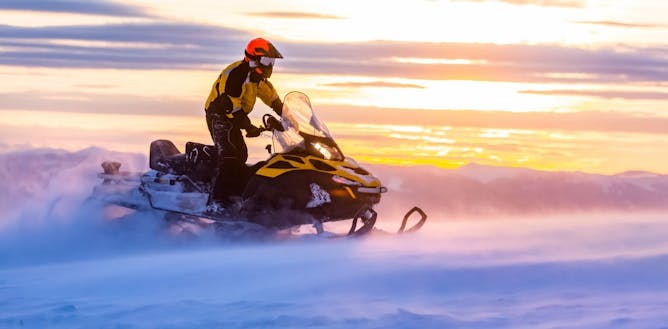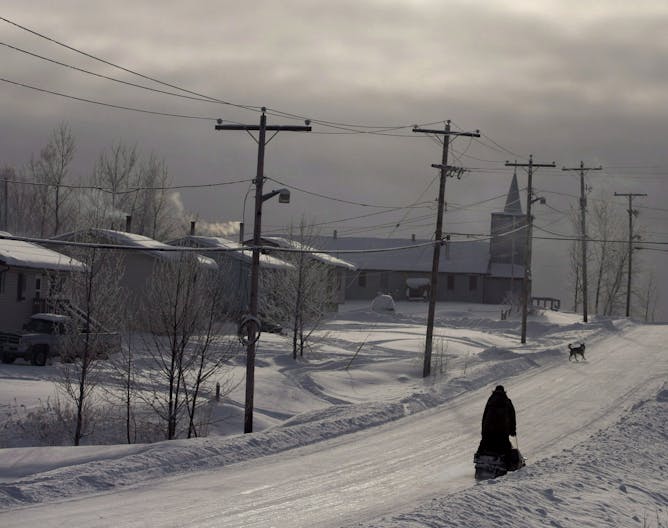|
Nearly a century ago, scientists invented a group of non-toxic “wonder gases” that could be used in refrigerators and air conditioners, and as propellants in aerosol hair sprays, deodorants and paints. They may have helped make modern life marvellous, but their effects on the Earth certainly weren’t wonderful.
These chemicals created the ozone hole over Antarctica, increasing UV radiation levels at the Earth's surface. It turns out they’re also responsible for as much as half of the warming seen in the Arctic.
Today in The Conversation Canada, Karen Smith from the University of Toronto explains how the accumulation of CFCs and other ozone-depleting substances in the atmosphere have helped warm the Arctic far more quickly than anywhere else on the planet.
Also today:
Regards,
|

Temperatures are warming faster in the Arctic than anywhere else in the world. Water and sewer pipes in Iqaluit, Nunavut, are cracking during the winter as the ground shifts.
THE CANADIAN PRESS/Sean Kilpatrick
Karen Smith, University of Toronto
New research finds that chlorofluorocarbons (CFCs) and other ozone-depleting substances have boosted the effects of climate change in the Arctic.
|

The COVID-19 outbreak began in a market at the edge of Wuhan, China.
(Shutterstock)
Roger Keil, York University, Canada; Creighton Connolly, University of Lincoln; S. Harris Ali, York University, Canada
The current outbreak of COVID-19 underscores the need to study urban growth to understand the spread and control of future epidemics.
|

It’s possible to lower the risks in adventure tourism to make it safer but legislators are grappling with the question of how to regulate the experience without killing the excitement.
(Shutterstock)
Alain A. GRENIER, Université du Québec à Montréal (UQAM)
The rise in adventure tourism is prompting a close examination of how to regulate it. But how to regulate risk without killing the adventure?
|

Eabametoong First Nation (Fort Hope), seen here in 2012, is one of the communities located near the proposed Ring of Fire development.
THE CANADIAN PRESS/Ryan Remiorz
Dayna Nadine Scott, York University, Canada
Ontario's approach to assessing the environmental impacts of mining in the Ring of Fire region couldn't address concerns about the cumulative consequences of development.
|

Jennifer Lopez se produit lors du spectacle de la mi-temps du Super Bowl de la NFL, le 2 février 2020, à Miami.
(AP Photo/John Bazemore)
Samantha Brennan, University of Guelph
Athlète, danseuse et artiste, le fait que J.Lo puisse encore performer à ce niveau à 50 ans donne de l'espoir à toutes celles qui veulent continuer à progresser - dans la quarantaine et au-delà.
|
Culture + Society
|
-
Adriaan van Klinken, University of Leeds
Desmond Tutu is by far the most high-profile African, if not global, religious leader to support lesbian and gay rights, and he has done so since the 1970s.
|
|
Health + Medicine
|
-
Laura Brown, Teesside University; Kelly Rose, Teesside University
Eating plant-based proteins is linked with lower risk of heart disease, stroke and diabetes.
|
|
|
|